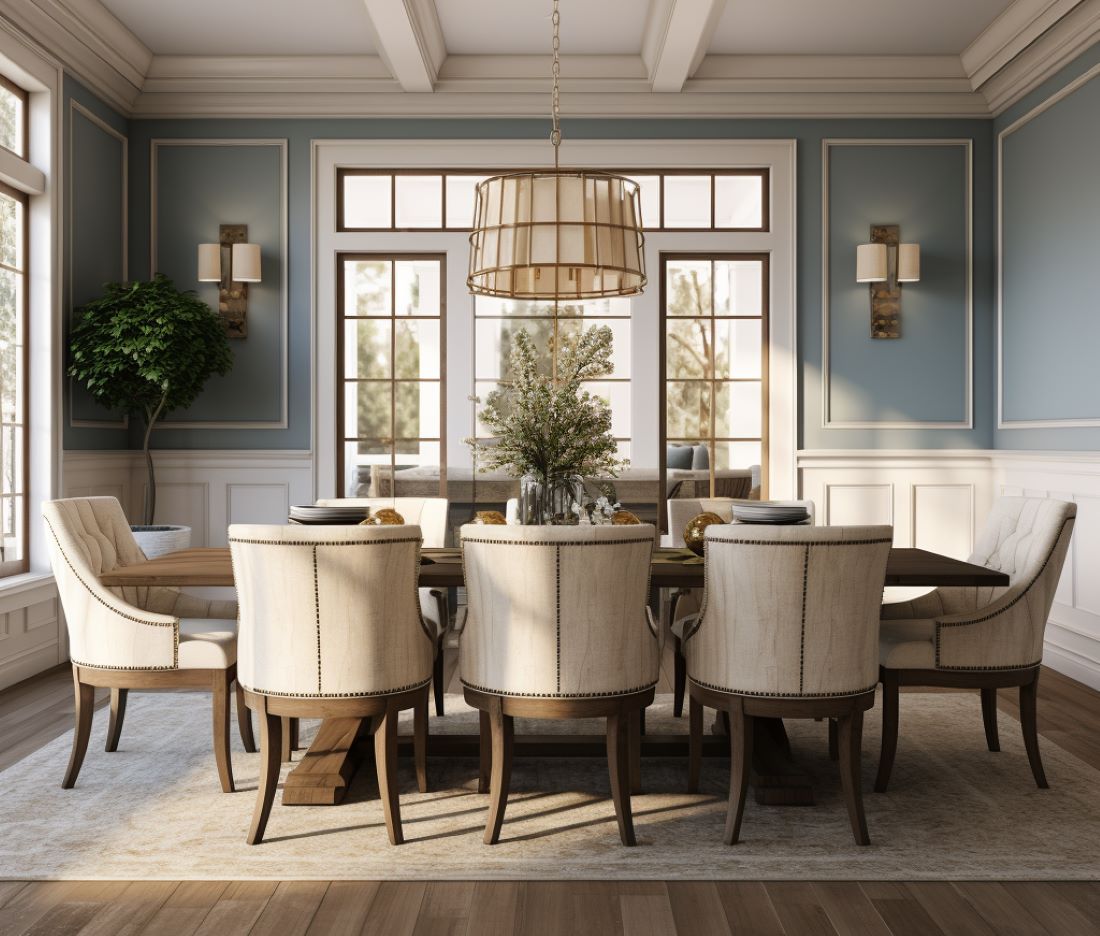You have probably heard about a transitional dining room. But what exactly is it, and how does it differ from other interior design styles? In this post, we will delve into the world of transitional dining rooms, exploring their key characteristics, design elements, and tips for creating the perfect transitional dining space.
I: Understanding Transitional Style
The clash of desires is one of the challenges both designers and clients face quite regularly. If you’ve ever been there, you know how it feels: there is the excitement of renewing your space, but also the wish to preserve some heritage or keep a few emotionally valuable items. You often hear that expression “mixing old with the new,” and yet, the combo rarely seems to work well in reality.
But here’s the good news: you just need to make the right matching choices, perhaps with the help of an experienced interior designer. A successful blend of traditional and contemporary furnishing is not only possible but produces superiorly elegant layouts as a result.
So, before delving into the specifics of a transitional dining room, let’s grasp the basics of the transitional style itself.
What Is Transitional Style?
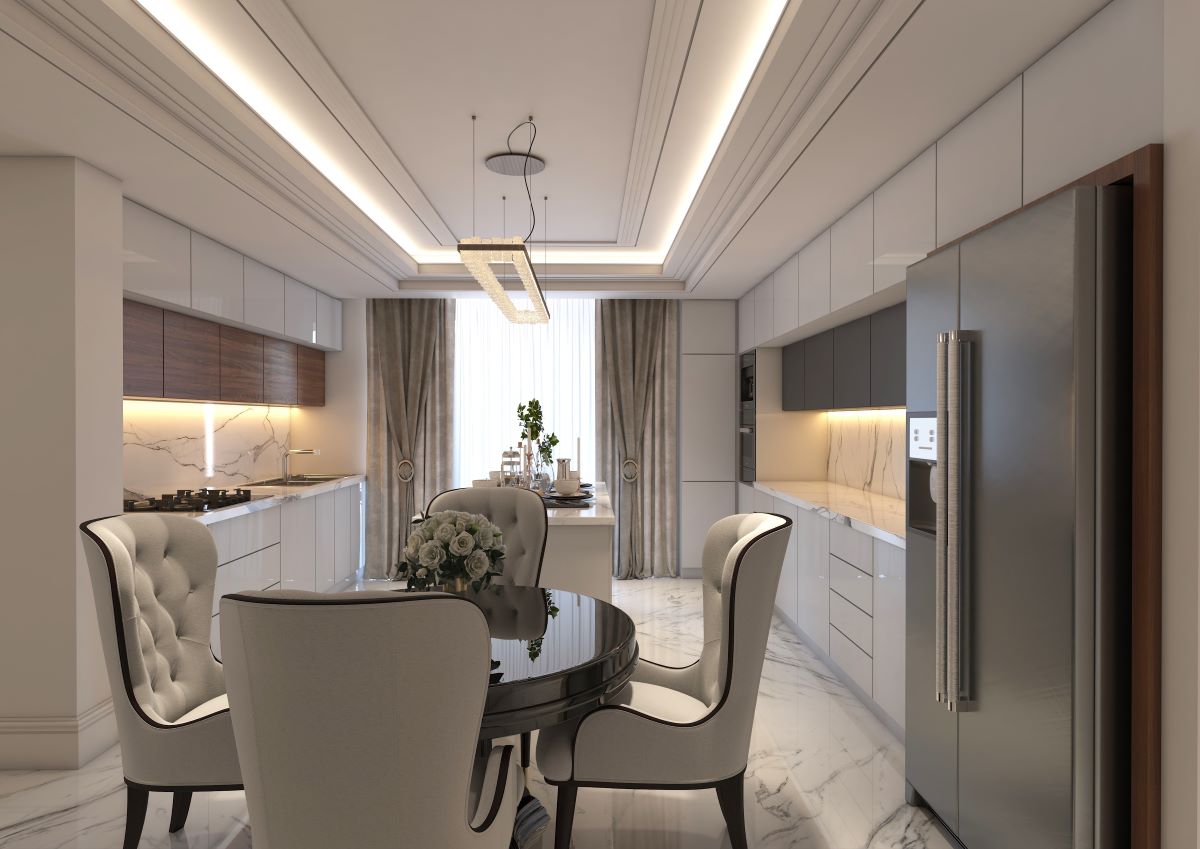
The transitional style is a harmonious blend of two distinct design fashions: traditional and contemporary. It seamlessly combines the timeless elegance of traditional elements and classic furnishing rules with contemporary design’s clean, functional simplicity. In return, this unique fusion creates a balanced yet versatile aesthetic that appeals to a broad range of tastes.
II: Keys to Achieve a Transitional Dining Room
Transitional design boasts several defining traits that set it apart from other interior decor styles. To create a successful transitional dining space, consider the following notable features:
Subdued Color Palette
Transitional dining rooms commonly rely on a neutral color scheme, which serves as a canvas for other design elements. Beige, gray, and soft tones like taupe are popular choices for walls and furnishings. These hues convey a soothing atmosphere, allowing for flexibility in other design elements.
However, the concept can also work well with some more vivid colors, especially when applied to the walls. Ideally, you would use pastel or deep muted shades of blue, green, purple, or red.
Strong Focus on Balance and Symmetry
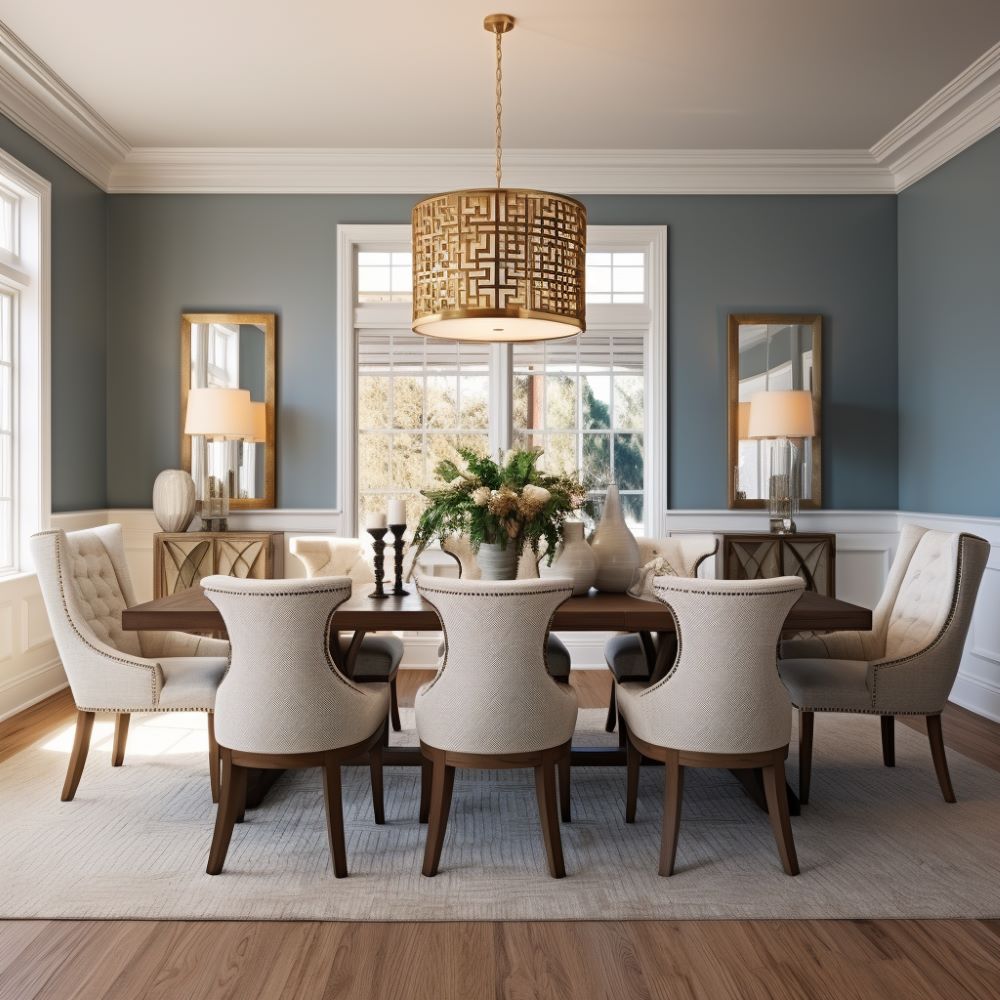
Stemming from the classic, tried-and-tested design codes, balance makes a fundamental principle in transitional layout.
You’ll find symmetry everywhere in a transitional dining room, from furniture and lighting to proportionally arranged décor pieces. Such consonance creates a sense of order and harmony in the space, elevating the entire scheme in return.
Thoughtfully Combined Elements & Materials
Another hallmark of the transitional style is the thoughtful combination of different materials. In a transitional dining room, you’ll often find wood, metal, glass, and fabrics, all blended to convey a timeless appeal.
For example, a wooden dining table is often paired with upholstered chairs featuring metal accents. This mixture of materials adds depth and interest to the room, but also allows a lot of flexibility. Depending on its elements, your final transitional design can exude the nuances of various styles, such as rustic, coastal, or French Provincial.
(Relatively) Subtle Patterns
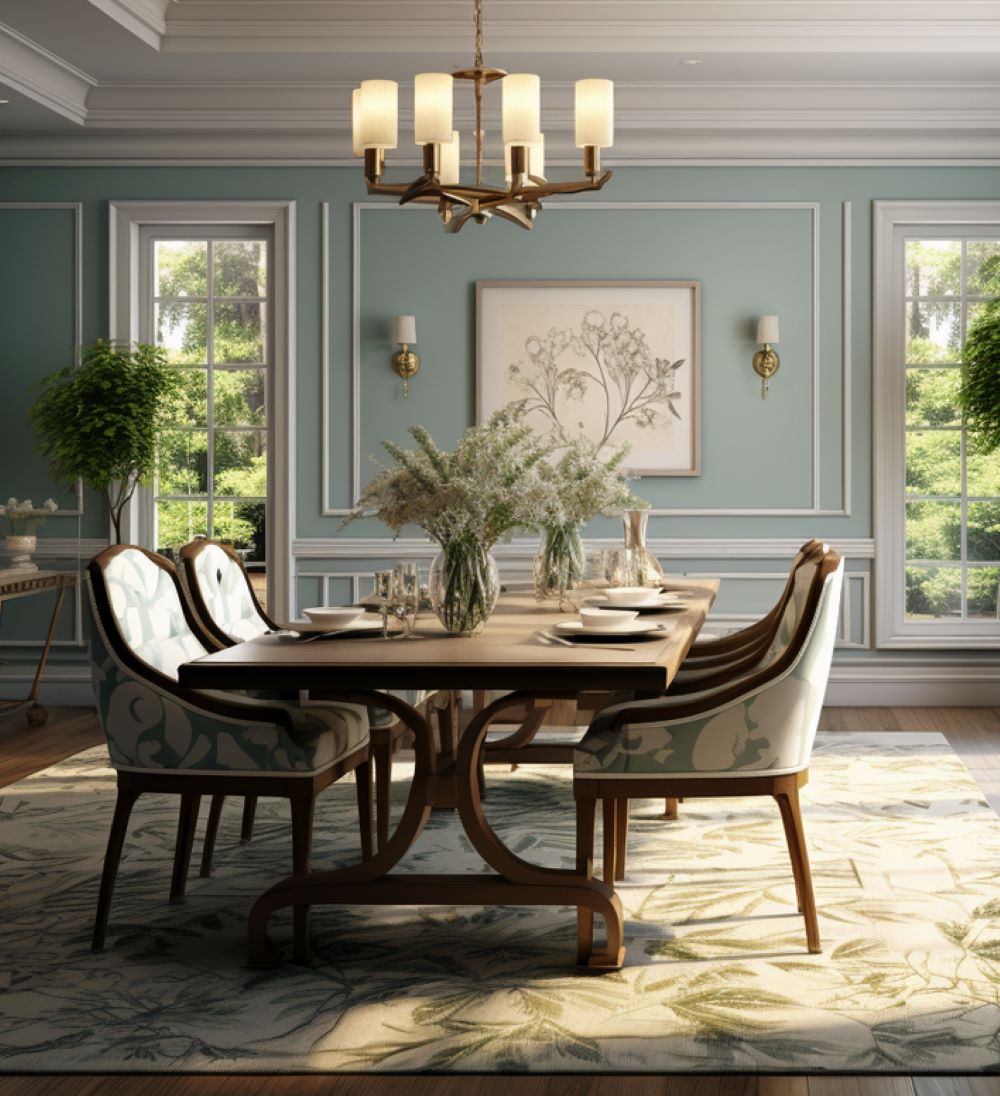
While transitional design emphasizes simplicity, it doesn’t completely shy away from patterns. The prints are typically subtle and understated but also often used as an accent.
Think geometric, striped, or damask chair patterns, antique rugs, or statement wallpaper. Pattern curtains are also one of the staples of a transitional dining room. On the other hand, discretely ornamented throw pillows can add a touch of visual interest without overwhelming the space.
Transitional Dining Room Furniture
The furniture in a transitional dining room is a crucial component of the design. This is also an opportunity to incorporate family heirlooms or vintage findings.
Transitional furniture sets typically boast clean lines, or at least they are not overly ornate. Central features like tables and chairs may have a classic silhouette, with upholstery that balances comfort and sophistication. Again, depending on the goal you aim to achieve, consider employing details or accents that gravitate towards a specific, desired style.
III: Design Elements of a Transitional Dining Room
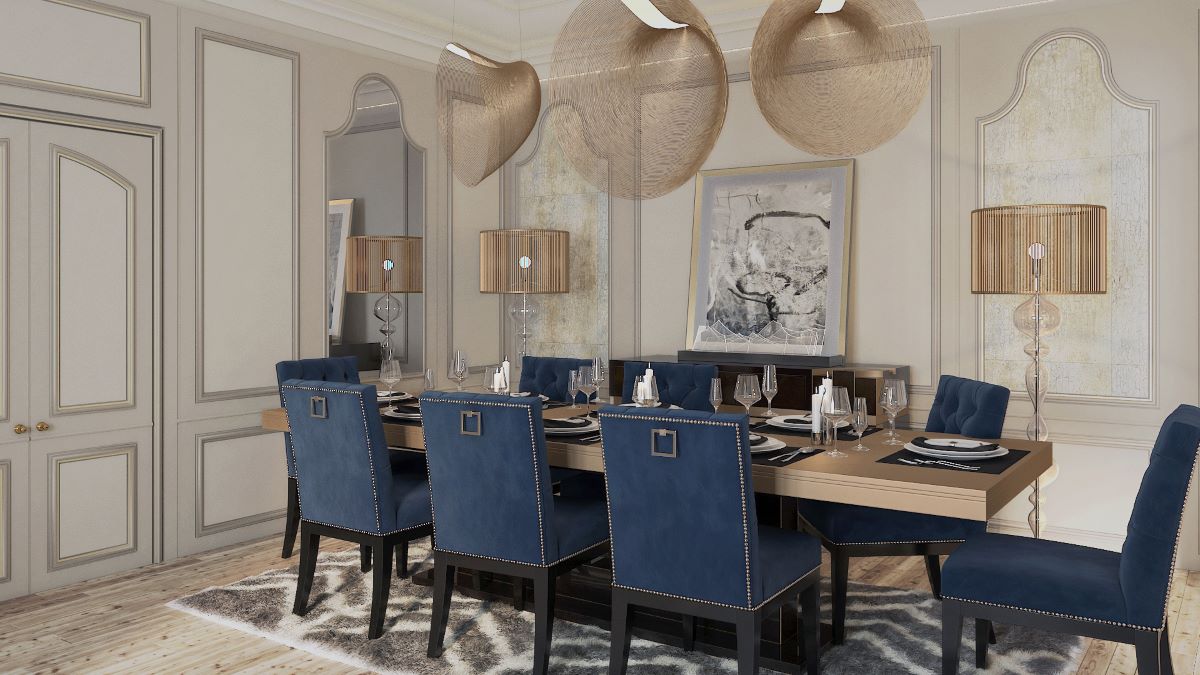
Now that you understand the key characteristics of a transitional dining room, let’s focus on the specifics that can help you create a stunning layout:
Transitional Dining Room Sets
The dining table and chairs are the heart of the transitional setup. When choosing these pieces, opt for a dining table with a classic shape made of durable material, preferably wood.
As an integral part of a transitional dining room furniture set, chairs should offer both comfort and style. Upholstered designs in a neutral color palette with a decorative combination of traditional and contemporary components always work well.
Consider a nailhead trim, for instance—it’s a popular way to infuse a traditional touch into contemporary furniture. Meanwhile, a carved sideboard (vintage or modern) can add a lot of distinctive character even to a subdued scheme.
Transitional Dining Room Lighting
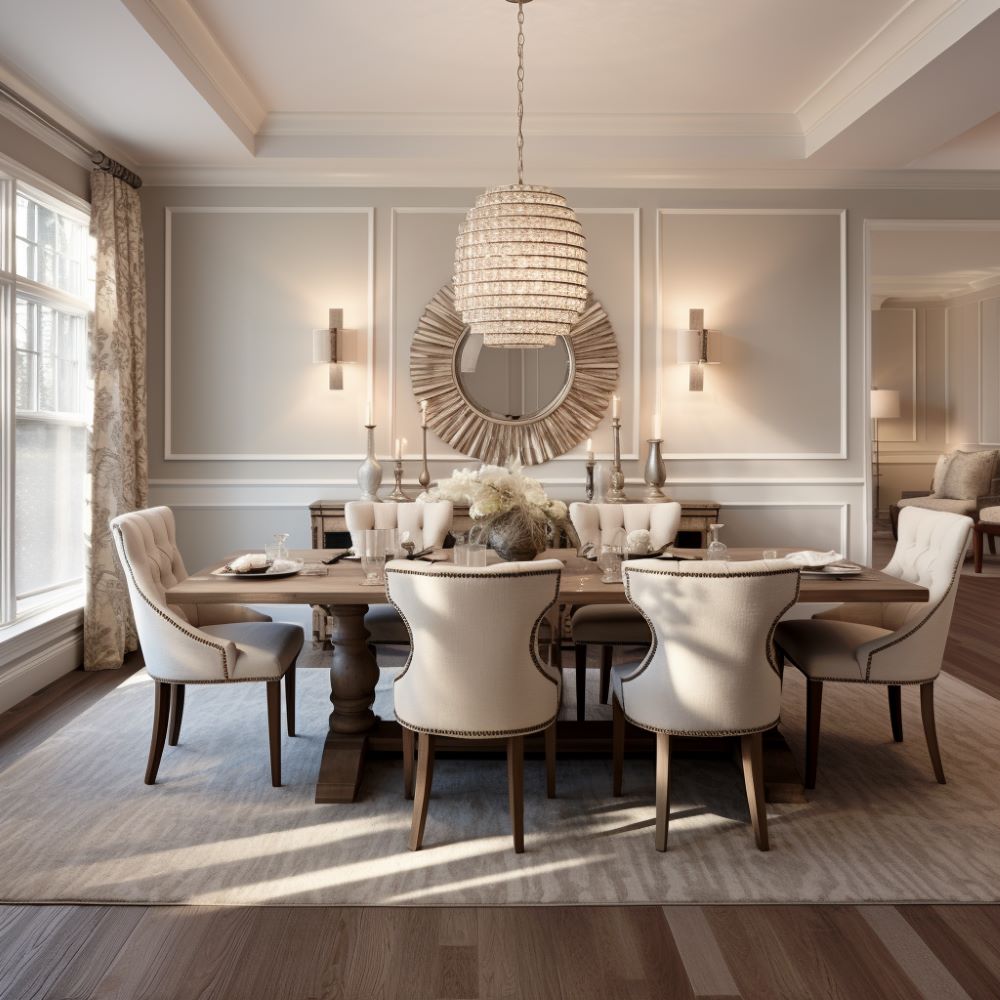
Lighting plays a vital role in setting the mood of a transitional dining room. Layer a variety of fixtures for diversity, and don’t omit table lamps, as their role extends beyond functionality. Traditionally ornate, or with a sleek modern metal base, table lamps often make an integral part of decorative sideboard vignettes.
In addition, chandeliers with classic designs, crystal drums, and streamlined forms are, more or less, a foolproof choice. They provide an elegant focal point while seamlessly blending with the room’s overall aesthetic.
Pendant lights with minimalist silhouettes can also be used to achieve a balanced look.
Window Treatments
Window treatments, such as curtains or blinds, should be simple and elegant. Light-filtering sheer fabrics in neutral tones are a safe bet that softens the space and allows natural light to enter. Nevertheless, sleek transitional dining rooms also love a nice opaque pair of patterned blackout shades.
If you opt for blinds, choose a minimalist style that complements the room’s color palette and adds a touch of sophistication.
Area Rugs
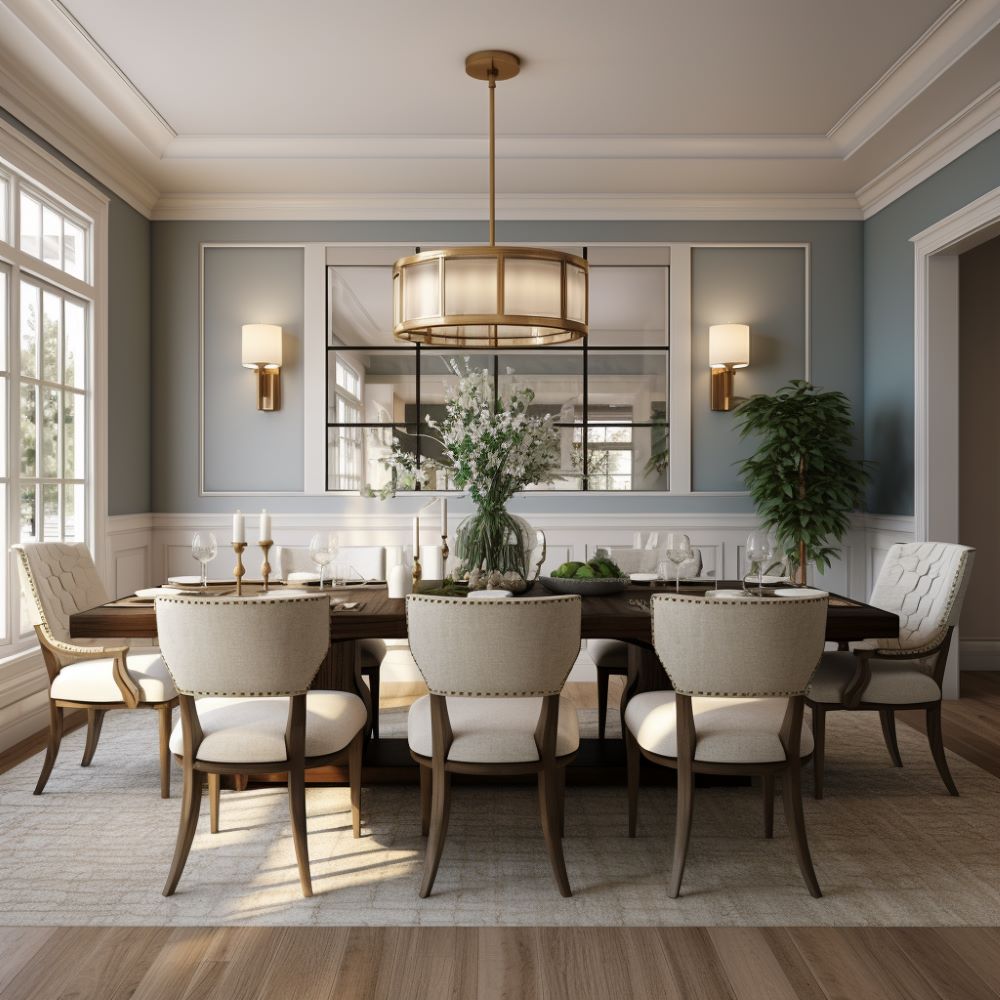
An area rug convincingly defines and anchors a transitional dining room set, which is particularly important inside an open floor plan. Look for rugs with subtle patterns, classic designs, or washed-put antique models that complement the color scheme. The rug should be large enough to comfortably accommodate the dining table and chairs, allowing easy movement.
Wall Art and Decor
When it comes to wall art and decor, transitional layouts favor a controlled, discerning approach. Select artwork, mirrors, or wall decor that contributes to overall harmony and maintains the established balance.
A large mirror is always a good choice. It can also enhance the sense of space and promote natural light flow in the room. Consider pairing it with two table lamps and a sideboard centerpiece for a clean, refined look.
Tableware and Accessories
Pay attention to the tableware and accessories you use to complete the transitional appeal. Invest in high-quality, classic napery in neutral colors. Simple yet stylish centerpieces, such as fresh flowers in a vase or a decorative bowl, make a great finishing touch.
IV: Tips for Creating a Transitional Dining Room
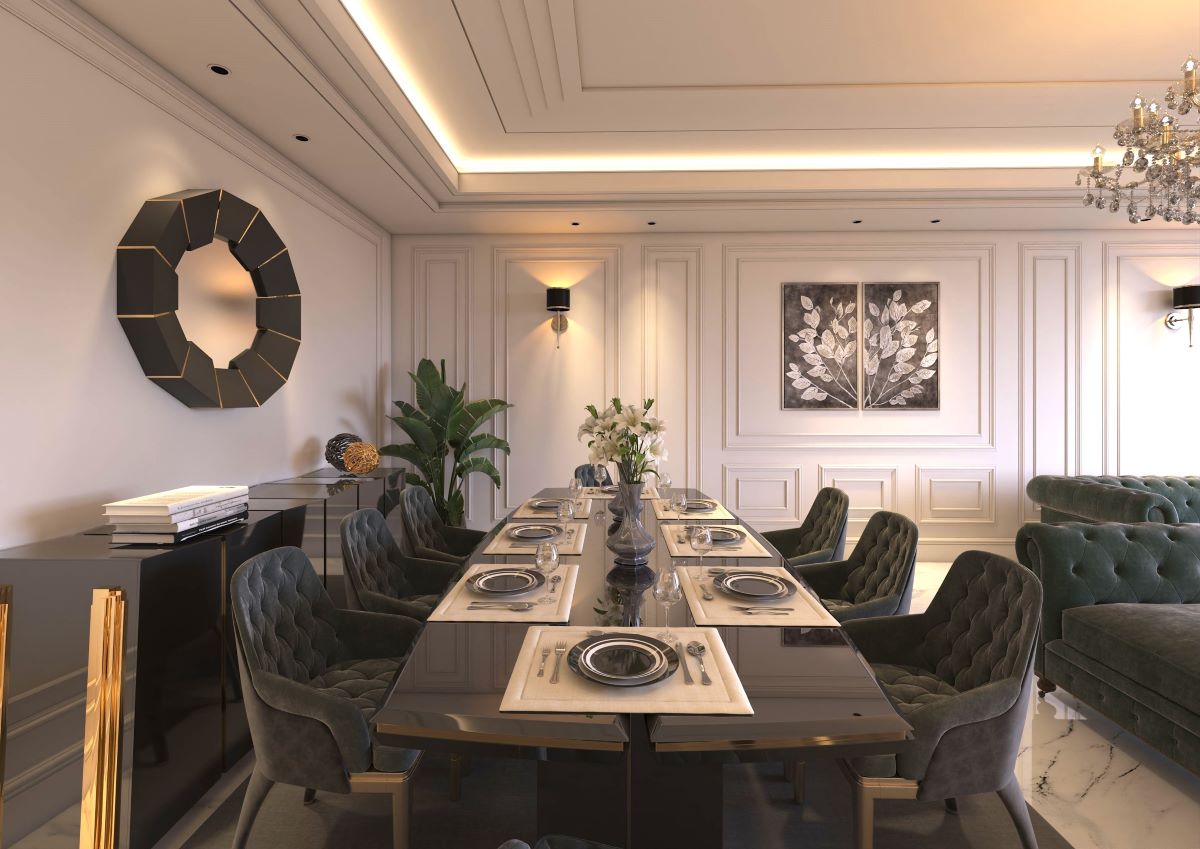
Creating a transitional room that reflects your taste and meets your functional needs can be a rewarding endeavor. Here are some valuable tips to help you achieve the perfect transitional dining space:
Opt for Quality Over Quantity
Invest in well-made, durable furniture and decor that will stand the test of time. This not only ensures the longevity of your transitional room design but also emphasizes its timeless elegance.
Keep It Cozy
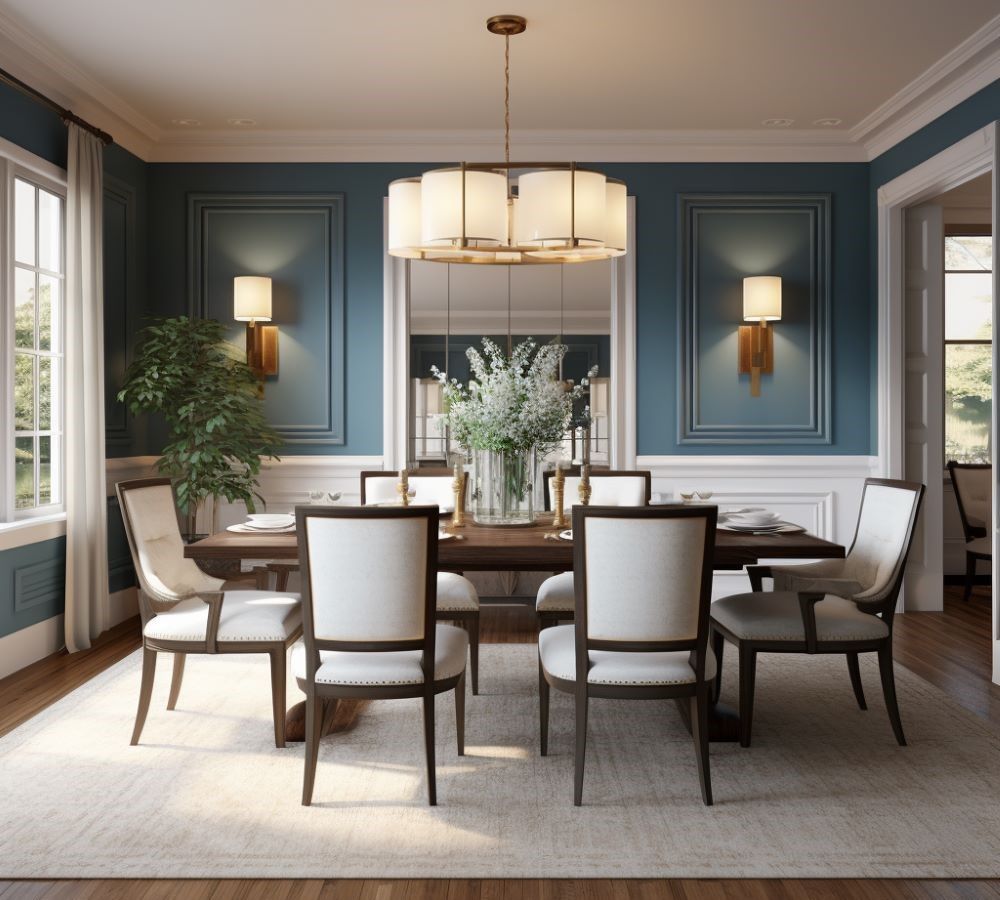
While transitional design leans towards simplicity, it should never feel cold or sterile. Incorporate elements that make the space feel cozy, warm, and inviting. Consider adding plush cushions on dining chairs, candles, and potted plants for a relaxed ambiance that promotes delight during meals.
Embrace a Personal Touch
Don’t be afraid to incorporate personal elements into your transitional dining room. Those could be family photos, heirloom pieces, or unique accessories that hold sentimental value. Such traces can make the design feel more personal and welcoming.
Balance Old and New
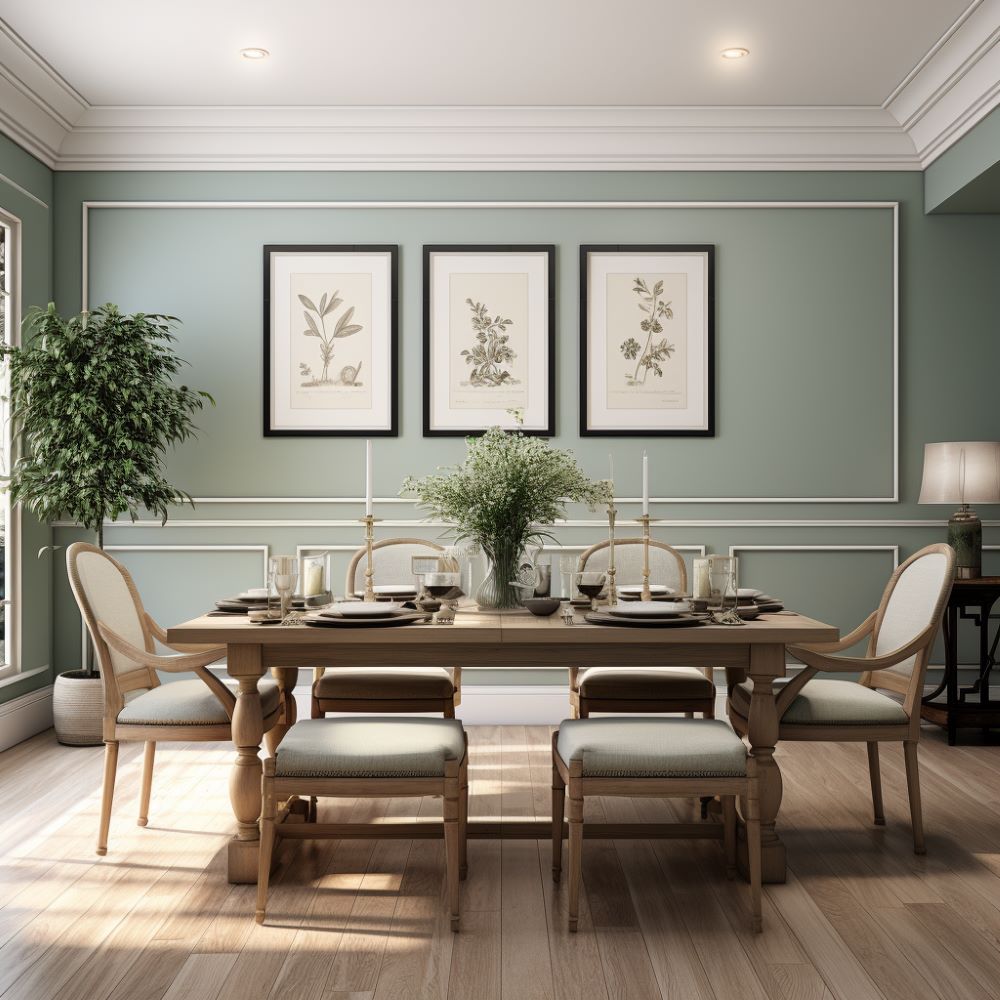
The beauty of transitional design lies in its ability to blend old and new seamlessly. Mix vintage or antique pieces with contemporary elements to create a unique look, adding character and depth to the space.
Pay Attention to Detail
Transitional design is all about the details. Pay attention to the finer elements, such as the hardware on furniture, the finish of the dining table, and the texture of fabrics. These details can significantly affect the overall aesthetic of your dining room.
Need assistance to create a top-notch transitional dining room setup, or incorporate those few tricky pieces?
Partner with our professionals and achieve a timeless aesthetic that will become the talk of the town. Schedule a consultation with Homilo and elevate all your dining experiences today!

